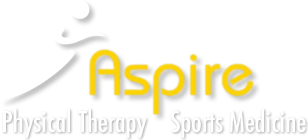Achilles Tendinits (or Tendinosis?) (or Tendonopathy?)
Many runners have experienced or heard of “Achilles tendinitis.” This condition usually presents as a painful enlarged tendon at the base of the calf as it attaches to the heel bone. It typically prevents people from running or even completing simple tasks like standing up from a seated position or going up or down stairs. Although this is a common injury, the medical field is currently challenging its understanding of these types of injuries and what treatments are most effective.
To begin, we should make some definitions. Traditionally, a tendinitis is considered an inflamed tendon; tendinosis is considered a non-inflamed but chronically degenerated tendon that used to be inflamed; tendonopathy is a tendon that isn’t necessarily inflamed or degenerated but basically isn’t normal healthy tissue (tendinitis and tendinosis are tendonopathies); and finally, paratenon, which is the layer or sleeve that surrounds the tendon. Recent studies of tendon tissue have revealed almost a complete lack of inflammatory cells or agents in tendinosis! This means that chronic tendon injuries really aren’t inflamed and therefore inflammation isn’t the cause of pain. Additionally, studies are showing that a tendinitis doesn’t necessarily become a tendinosis. Studies are also showing that the sleeve around the tendon, the paratenon, may be a contributor to pain.
So what is going on and what causes the pain? Good questions. We really don’t know at this point and that gives a challenge to finding appropriate treatments. Some proposed mechanisms of what causes the pain relate to chemical irritants in the tendon or disruption in the structural integrity of the collagen in the tendon.
From a physical therapy standpoint, there are a few treatments that have been found to be effective in overcoming Achilles tendinits/tendinosis. First, is to reduce the aggravating factors. This means limiting running, jumping, sprinting. Second, it is crucial to engage in regular stretching of the calves and thus the tendon. Third, and most importantly, is “eccentric” exercise to the tendon. Eccentric exercise is the “lowering” phase of an exercise. For example, if one is performing calf raises, the upward motion is “concentric” while the lowering portion is “eccentric.” Patients are encouraged to perform eccentric exercises during rehab. This can be difficult to do. How do you go down without going up? Some ideas follow: Stand at a counter and push yourself up onto your toes with your hands, then lower yourself down with your calf muscles. Alternately, if you only have one side that has the tendinosis, say your right side, keep your weight on the left foot, rise up in the air, shift your weight to the right foot and lower yourself on the right and repeat. A final option is to do basic calf raises but make the upward portion quick and the lowering portion very slow. For example, one second to rise up and 4 to 6 seconds to lower.
Physical therapists can also offer modalities and hands on treatments that may be beneficial in speeding recovery. These include pulsed ultrasound, infrared light therapy and electrical stimulation in addition to running form analysis, foot evaluation and exercise prescription. Don’t hesitate to see one of the therapists at Outpatient Physical Therapy this winter season and let them evaluate your unique situation and develop an individualized program to get you back on the road!

